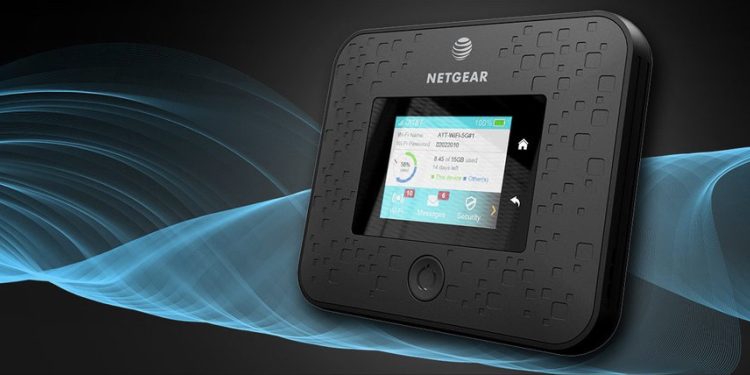Public relations professionals know that the easiest way to bury bad news is to let the story out late on a Friday, when many journalists are packing up and heading home. So why did AT&T wait until nearly midnight on Friday to share word that it was the first U.S. 5G carrier to cross the 2Gbps speed mark — seemingly good news that everyone interested in 5G should know about?
To put this in context: The 5G standard was developed to facilitate multi-gigabit cellular speeds, but ever since late 4G chips adopted early 5G technologies, there’s been industry-wide ambiguity over how carriers would differentiate and market their 5G networks. In early 2018, Qualcomm suggested that early 5G chips and networks might be differentiated by 2Gbps or 4Gbps speeds, but as actual 5G networks have popped up, these companies have tended to promise 1Gbps “peaks” with more typical speeds in the 300 to 600Mbps range.
These speed differentials matter. As AT&T puts it, a consistent 1Gbps speed lets you download a two-hour HD movie in 20 seconds, while a consistent 2Gbps speed enables the same download in 10 seconds. On current 4G networks, downloading the same movie would take between 200 and 1000 seconds, which is to say somewhere between three and 17 minutes, most likely on the longer side. If switching from a 4G to 5G phone cuts your file transfer times from 10 minutes to 10 seconds, you’d have good reason to switch, and maybe even change how you use your device.
But there’s a difference between test speeds and real world speeds — AT&T has been especially ambiguous when it comes to the latter. The company announced the launch of its mobile 5G network in late 2018 with no performance promises, claiming that it was still gathering data. AT&T later said that its only 5G device, the Netgear Nighthawk 5G Mobile Hotspot, was “designed to eventually reach a peak theoretical speed up to 979Mbps in ideal lab conditions,” with the caveat that “actual speeds will be lower.” Yet its engineers have been working to push those speeds up, apparently even late into the last Friday of every month.
June 5th: The AI Audit in NYC
Join us next week in NYC to engage with top executive leaders, delving into strategies for auditing AI models to ensure fairness, optimal performance, and ethical compliance across diverse organizations. Secure your attendance for this exclusive invite-only event.
Over the past 30 days, the Nighthawk has somehow gained the power to outperform “ideal lab conditions” in the real world. Exactly one month ago today, AT&T said its 5G network was the first in the U.S. to surpass 1Gbps, notably using the Nighthawk “in multiple cities.” Now AT&T is saying the Nighthawk broke the 2Gbps barrier “outside the lab in the real world,” specifically in Atlanta, Georgia, one of 19 cities where it’s currently offering 5G service.
Oddly, both announcements were made late on Fridays, and although AT&T had no official comment as to why, I suspect there are two possible reasons for this. The first is that AT&T felt bona fide competitive pressure to get its good numbers out ahead of key rival Verizon, which one month ago was just on the cusp of launching its mobile 5G network and now is only weeks away from launching the Samsung Galaxy S10 5G, with plans to expand its 5G mobile network to more cities. Putting out 1Gbps and 2Gbps “best case” AT&T figures ahead of these launches could make Verizon’s lower real-world numbers seem unimpressive.
A second reason: AT&T knows that regular consumers still aren’t using the Nighthawk, so its numbers aren’t guaranteeing anything to users. The carrier is just saying that its hardware, presumably with recent software and tower updates, can sometimes hit a much higher performance level than previously expected — and deliver on 5G’s promise of multi-gigabit speeds. Putting out the news late on a Friday night lets AT&T put a “2Gbps” flag in the ground without having to face the challenging questions of when its users are actually going to get these speeds, and who those users will be.
As of last week, AT&T said that the only customers currently on its 5G network are businesses, and that’s not surprising, as it is still restricting sales of the Nighthawk 5G hardware behind a contact form. That might not change until AT&T launches its own version of the Samsung Galaxy S10 5G, which will happen at some unspecified time in the spring — possibly in June. Meanwhile, Verizon is serving regular consumers in six cities with either 5G home broadband or Motorola’s 5G Moto Mod devices.
It’s great in the abstract that some businesses in Atlanta may be able to get 2Gbps speeds on a 5G device regular consumers can’t buy. But what really matters is the actual speed normal 5G users across multiple cities will see on actual consumer devices. Verizon has provided a sub-1Gbps sense of what to expect, but AT&T hasn’t.
That makes this 2Gbps peak accomplishment … well, worthy of a late Friday night release. When there’s something really worth shouting about, expect AT&T to share the news when most of its customers are actually awake to read about it.

